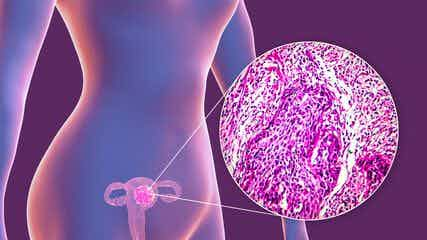3D Brachytherapy for Cervical Cancer Effective, Limits Adverse Effects
MRI-guided 3-dimensional brachytherapy (BT) for cervical cancer effectively delivers high-dose, tumor-specific radiotherapy with few serious adverse effects on surrounding healthy tissue.
MRI-guided 3-dimensional brachytherapy (BT) for cervical cancer effectively delivers high-dose, tumor-specific radiotherapy with few serious adverse effects on surrounding healthy tissue, according to a study presented in April at the 2nd Forum of the European Society for Radiotherapy and Oncology in Geneva, Switzerland.1
Currently, point-based 2-dimensional MRI-guided BT generally is used for definitive radiotherapy in cervical cancer. However, this treatment is associated with significant adverse effects to surrounding vaginal tissues. MRI-guided BT for cervical cancer allows for the delivery of high doses of tumor-directed radiotherapy. Repetitive 3-dimensional MRI scans performed before each BT implant allows for dose modification specific to the anatomy of each patient, accounting for the position of at-risk organs as well as tumor regression, which often results from preceding external beam radiotherapy and chemotherapy.
To date, few studies have investigated the relationship between the radiotherapy dose during BT for cervical cancer and adverse effects on the vagina. The purpose of this study, called EMBRACE, was to establish a benchmark for clinical outcomes, such as control of tumor growth, patient survival, treatment-related adverse effects, and quality of life. The study involved 523 patients from 19 centers for an average of 14 months. Patients with locally advanced cervical cancer underwent external beam radiotherapy, chemotherapy, and MRI-guided 3-dimensional BT. Treatment effects on the vagina were assessed at scheduled follow-up examinations.
Most patients experienced grade 1 or grade 2 vaginal morbidity during the first 2 years post-treatment. Vaginal shortening and narrowing in the upper vagina was the most commonly reported symptom. Severe vaginal adverse effects, such as vaginal fistula, were rare. As the dose of radiotherapy delivered to the upper vaginal wall increased, the probability of moderate vaginal morbidity increased significantly. The implication is that better-directed delivery of radiotherapy will reduce the dose of treatment to surrounding healthy tissues, decreasing the risk of treatment-related adverse effects to those tissues and improving quality of life.
A related study showed that image-guided BT can provide very high doses of radiotherapy (more than 90Gy), achieving local control of the tumor in more than 90% of patients with cervical cancer.1
MRI-guided BT for cervical cancer significantly improves dose-volume histogram parameters, and the improved dose delivered has significant positive effects on the clinical outcome, concomitantly decreasing the rates of both local failure and morbidity, explained the researchers.
Pertinent Points:
- Use of 3-dimensional MRI-guided brachytherapy for the treatment of cervical cancer significantly reduces morbidity to surrounding vaginal tissues.
- The most frequently reported adverse treatment effect is vaginal shortening and narrowing of the upper vagina.
References:
1. 2 Landmark studies report on success of using image-guided brachytherapy to treat cervical cancer [press release]. Available at: http://www.eurekalert.org/pub_releases/2013-04/esfr-tls041813.php. Accessed April 26, 2013.




















